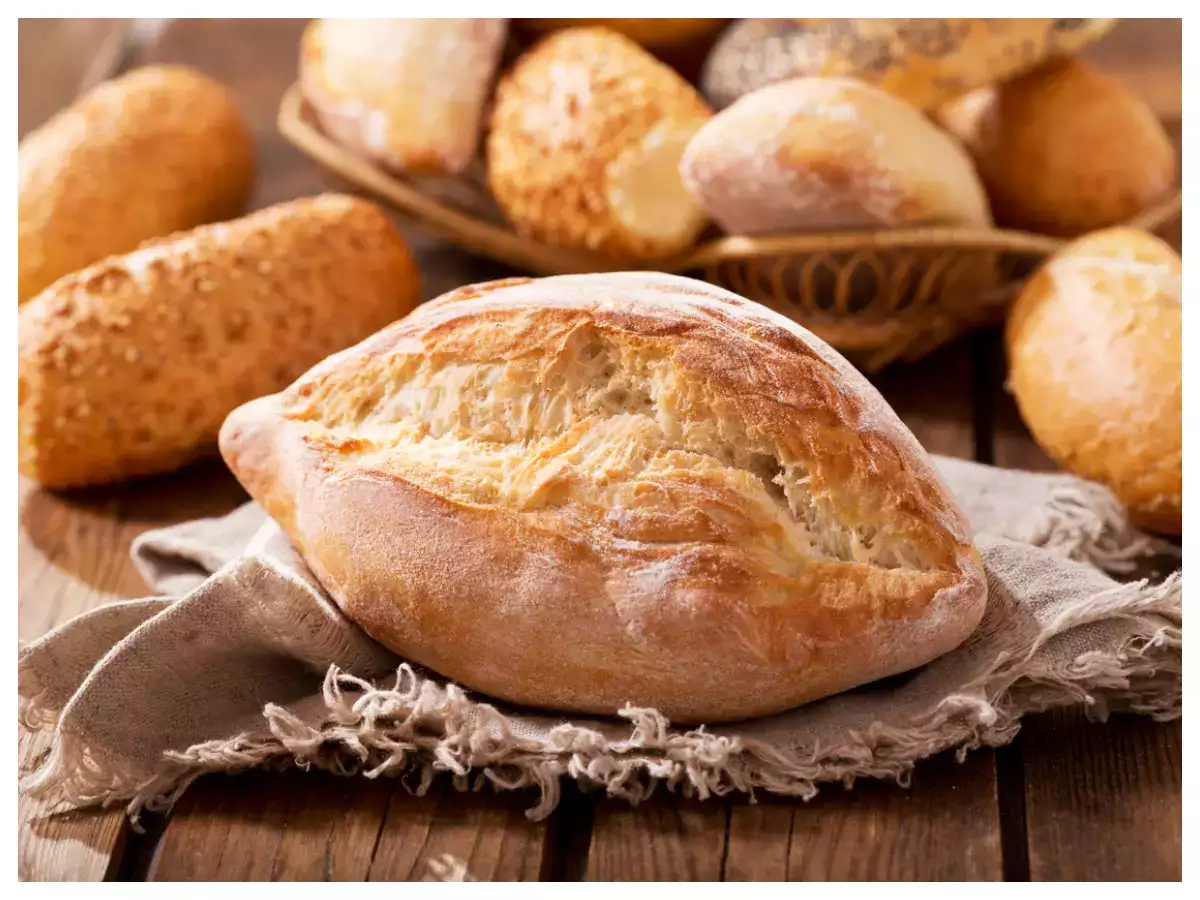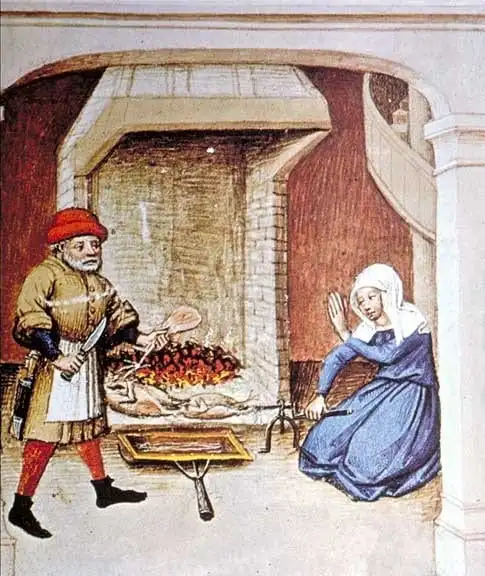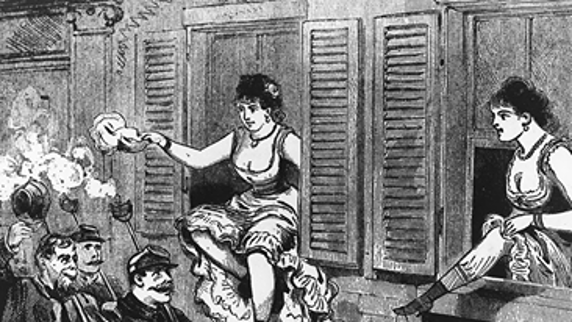5 Facts About Food & Sex History
- Elexus Jionde

- May 3
- 6 min read
Updated: May 22
Have you ever noticed the historical connections between sex and food? There are too many to name, but here's five!

Dionysus The Delicious

One of the earliest celebrated Greek deities, Dionysus was believed to be the God of wine, fruit, vegetation, ecstasy, madness, and theater. Wine, with its power to make you drunk in an era where you had an extremely limited understanding of the world around you, was often believed to be a religious experience. As an “outsider God” believed to arrive in communities, he was known as “the God who comes,” an amazing double entendre. Early celebrations involved parades off people carrying all manners of things, including phallic shaped objects and loaves of bread. By the time of the Romans, maenads, the female worshippers, drank, ate, danced, and chanted themselves into a frenzy, hoping to be possessed by Dionysus and experience a glimpse of true madness and abandon. They were depicted in art as being willing to kill those who denied the sanctity of their God.
According to Livy, Bacchus, as he came to be known in Rome, was initially celebrated around 200 BC by women three times a year in the daytime before turning into an orgy-type event where food and drink was enjoyed without limits. There was fish, meat, cheese, bread, and oil. Livy claimed that not only was their relations between the sexes, but murders and homosexuality, featuring high-status individuals like Nero and Caligula, and 7000 initiated cultists. He was conservative and considered the alleged orgy-feast celebrations to be a sign of Rome’s increasing moral decay. The nighttime celebrations were eventually outlawed and driven underground. The legend of the torrid feasts for Bacchus were a popular art subject during the Renaissance, with the Bacchanalia by Peter Paul Rubens in 1615 featuring nudity, sex, and fruit. Even in the 19th century, William Etty found inspo with A Bacchanalian Revel.
Food as Love Potion

In 10th century Germany, the Bishop Bruchard of Worms wrote in his penance guide, “Have you done what some women are wont to do? They take a live fish and put it in their vagina, keeping it there for a while until it is dead. Then they cook or roast it and give it to their husbands to eat, doing this in order to make men be more ardent in their love for them. If you have, you should do two years of penance on the appointed fast days.” According to Dr. Kate Lister in The Curious History of Sex, there were other sordid recipes that warranted penance. Asked Bishop B,
“Have you done what some women are accustomed to do? They lie face down on the ground, uncover their buttocks, and tell someone to make bread on their naked buttocks. When they have cooked it, they give it to their husbands to eat. They do this to make them more ardent in their love for them.” Dr. Lister found anecdotes from women who made “Cocklebread”, including a 17th century observer who detailed how “‘young wenches’ would ‘get upon a Tableboard, and as they gather-up their knees and their Coates with their hands as high as they can, and then they wabble to and fro with the Buttocks as if they were kneading the Dough with their Arses’.
Whilst doing their wabbling, the women would sing a chant that later became outfitted as a children’s nursery rhyme. They’d then present the bread, sometimes said to be molded using the vulva, to the man they wanted to marry. DELICIOUS!
Food and Moral Panics

In the 18th-20th centuries, there were a bunch of moral panics over alleged aphrodisiacs, which was a reflection of globalization, ethnic mixing, and the threat of feminism to gendered spheres. Chocolate, long believed in various cultures to get the juices flowing, was said by historian Carol Groneman to be a key thing thought to cause nymphomania in 18th-century France. Rumors persist that during the time of the Aztecs, the emperor Montezuma II drank dozens of cups of hot cocoa a day to remain vigorous, strong, and able to please his many wives. While this early cocoa was nothing like the chocolate of today, it had came to prominence after the expansion of colonial sugar plantations in the 17th century— and monks and nuns were forbidden to consume it in case it drove them to do something naughty. Not that most people could afford it.
Wrote Charles Perry, “When the first chocolate shop in London opened in 1657, it sold ready-to-brew chocolate, with sugar, nuts and spices already blended in, for 10 to 15 shillings a pound, far beyond most people’s budget.” So chocolate was for rich people perusing small shops and chocolate houses— something to fantasize about and covet. It wouldn’t become a hot commodity for regular people until the 19th century. And the stories of its powers as an aphrodisiac caused some to rebuke it. It was one of the many foods Sylvester Graham advised people not to eat, because it might make you want to touch yourself— allegedly. You can learn more about him and the development of the graham cracker and other sex-less foods in a Short History of Masturbation. Tea was also the target of moral panics during the colonial era , with one observer alleging in 1745 that tea would “prevent that quiet Harmony which ought to subsist betwixt Man and Wife, causeth Disobedience and domestic Strife, and at last the artful Husseys lay all the Blame on their Husbands.”
Food and Sex Workers

In the red light districts of Edo-period Japan, there was Nyotaimori, or the practice of serving sushi on a woman’s naked body— a practice that became more prominent in the 20th century. Its an eccentric and upscale party fad in the present day, seen on reality shows, criticized as objectifying, and utilized by Samantha Jones in the Sex and the City Movie. Another modern example of food in sexualized spaces are gentlemen’s clubs and strip clubs, which are renowned for breakfast buffet and wings. Brothels and cat houses also appeal to their clientele— and take more of their money— by offering food. Tiramisu, the italian dessert composed of ladyfinger cookies soaked in coffee, eggs, sugar, and mascarpone, is at the center of a popular legend that says the treat was served to 19th-century brothel patrons in Treviso, Italy, to keep them awake and ready to spend more money on girls. Another italian dish wrapped up in sex worker urban legend is Spaghetti Alla Puttanesca, which means Spaghetti in the style of a whore. It’s made with anchovies, capers, olives, tomatoes, and spices such as chili pepper, red pepper flakes, and garlic. Some say it was a dish made by sex workers between clients, others claimed the aphrodisiac ingredients lured clients, and food historian Jeremy Parzen theorized "Italians use puttana (and related words) almost the way we use shit, as an all-purpose profanity, so pasta alla puttanesca might have originated with someone saying, essentially, 'I just threw a bunch of shit from the cupboard into a pan.’"
Monetizing Sexy Food

While Carls Jr began as an innocent hot dog cart in 1941 by Christians Carl and Margaret Karcher in Los Angeles, it was a global chain by the early 2000s, with marketing campaigns targeting the young and horny. Said CEO Andrew Puzder when the company was criticized, "I like our ads. I like beautiful women eating burgers in bikinis. I think it's very American.“ In 2011, after more backlash, the company issued a statement saying, "We believe in putting hot models in our commercials, because ugly ones don't sell burgers.” Carl Karcher, who spent a million dollars in the 70s to unsuccessfully keep LGBT people out of California public schools, was reported as saying that he was “heartbroken that a company he founded on Christian principles has taken such an amoral act.” Breastaurants like Hooters have become successful because servers are scantily clad and flirty, showcasing their off-limits body parts while doling out plates of wings and mozzarella sticks.
There is also often a sexual component to mukbang videos, in which people sit and consume food for an audience. For some people its about absolving loneliness and other non-sexual reasons, but for many— the dipping, slurping, chewing, licking, cracking, and sucking is an arousing ASMR experience. Lots of people have made big money by eating food in a sexualized manner-- especially conventionally attractive and/or skinny women who are able to eat large quantities. The mukbang genre came to prominence worldwide in 2010 after South Korean people, particularly petite women, began posting videos, and was a reflection of South Korean food culture, in which people typically don’t eat alone. But people with feederism fetishes enjoy mukbangs for different reasons.
According to a 2023 study, “research has shown that overweight male viewers of mukbang were motivated to do so by a desire to fantasize about thin, attractive female mukbangers gorging themselves on large quantities of food”— and that skinny women’s audiences were primarily overweight men. Troublingly but not surprisingly, the appearance of the mukbanger influences how the mukbanger is perceived and whether or not the viewer feels “yearning, disgust, pleasure, shame, envy, or desire.”




















.png)
Comentários